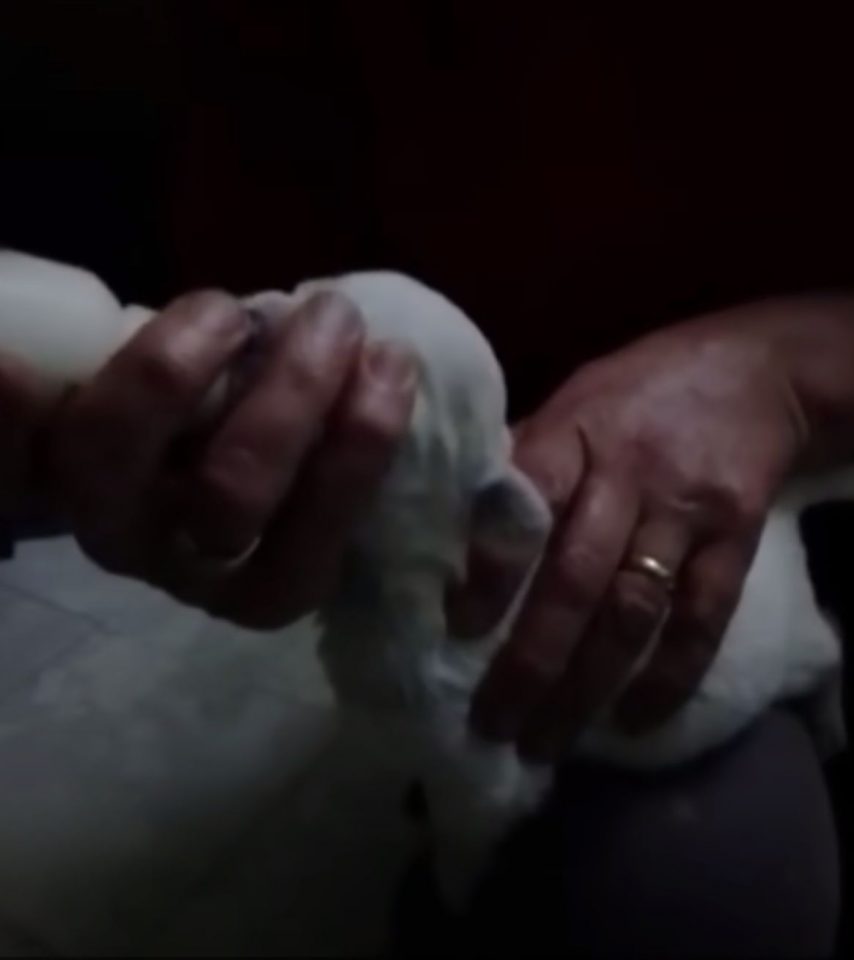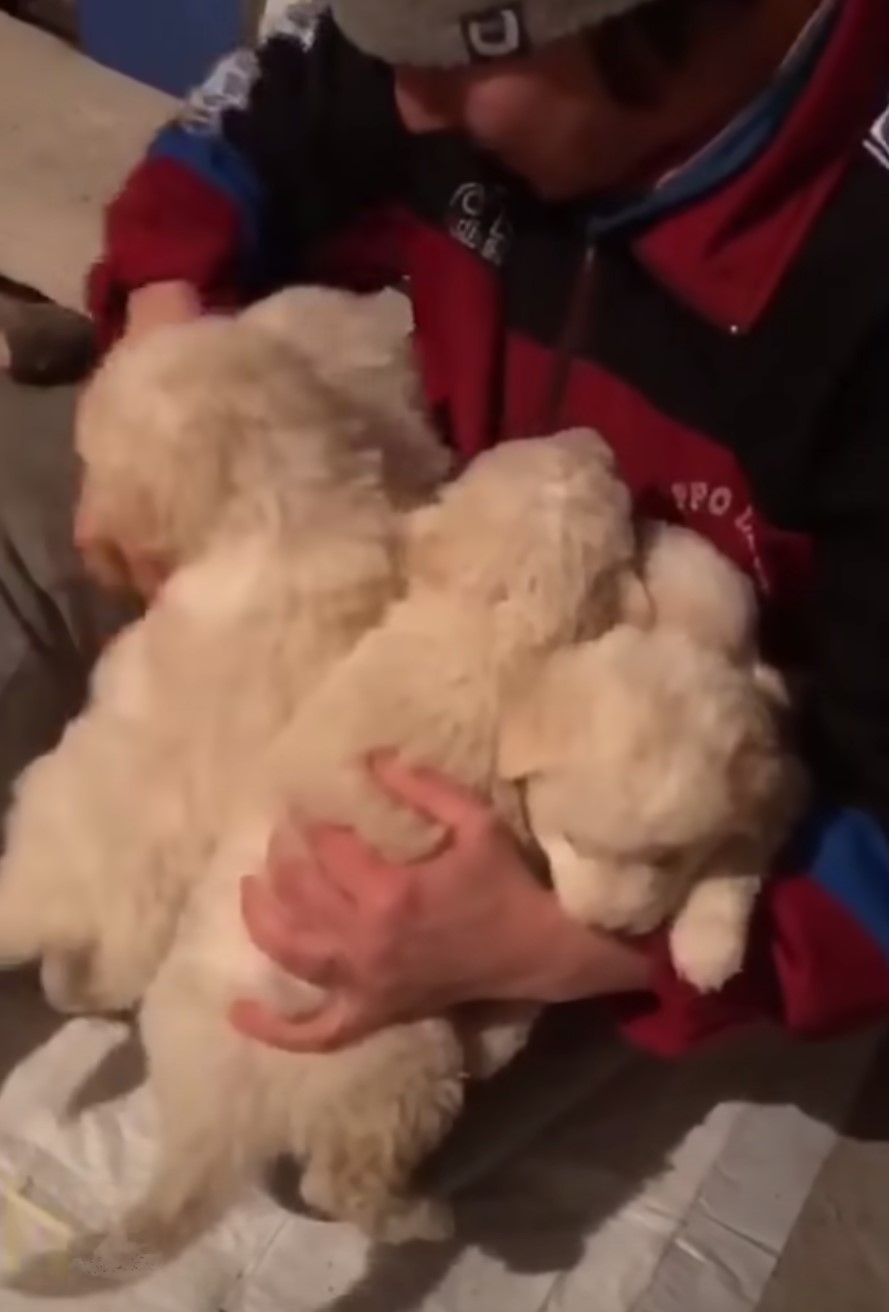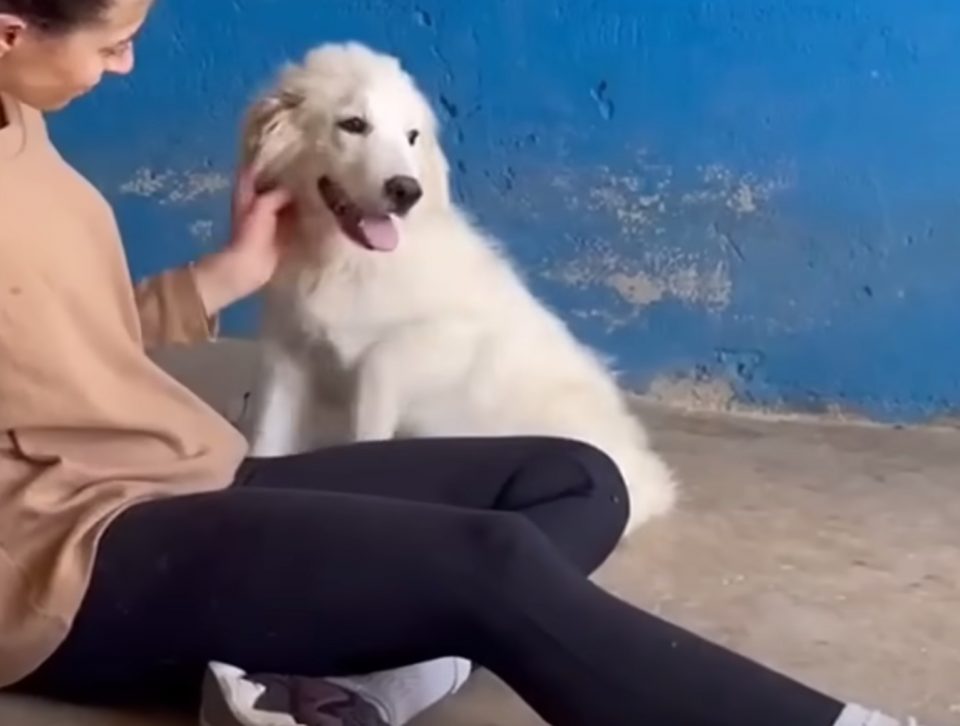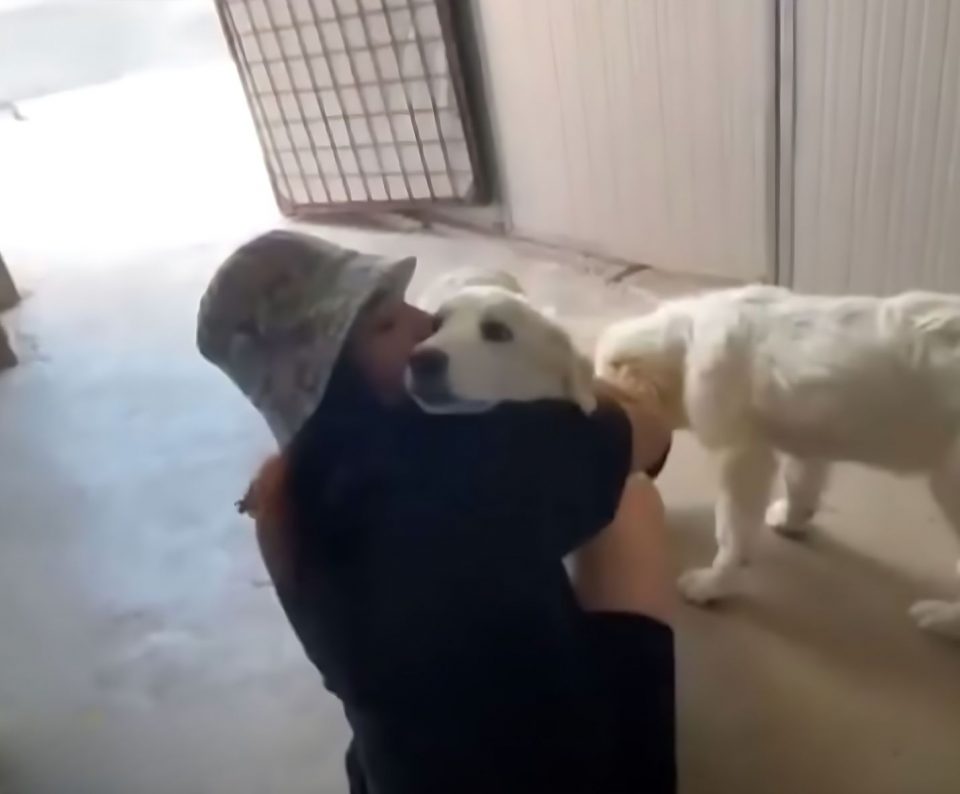When a group of hikers was walking through a forest, they heard some strange noises but they couldn’t figure out where they were coming from.
Upon further investigation, they saw a strange bag and they soon found out that inside of it were five little puppies.
The puppies were crying their little hearts out, hoping that somebody would hear them and take them in.
The hikers knew that if they spent another night in this forest, the pups would not make it. So, they swiftly gathered them together and made their way to their campsite, taking the pups somewhere where they would be safe and sound.
Finally Safe

When they got to the campsite, the first thing the hikers had to do was dry the pups since it was raining heavily on them and get them as warm as possible.
After that, suspecting that they hadn’t eaten in a very long time, the hikers fed them some milk, making the pups very happy.

Just the thought of leaving the pups in the forest broke the hikers’ hearts, so they decided to take them home with them.
And, the second these adorable pups arrived at their new home, they were overjoyed since they had a warm bed to sleep in and plenty of yummy food to fill their bellies with.

The puppies, four girls and one boy were named Venere, Alfie, Becca, Dea, and Tiffany, and they received a nice bath that washed away all the mud and dirt that was covering their fur.
They were also taken to the vet, where they received a thorough checkup, which determined that they were perfectly healthy.
Finally living in such a happy and healthy environment, the pups were growing bigger and stronger every day.

They spend their days having fun and playing with each other, as well as with their hoomans. And, when they get tired, they cuddle up together for a nice relaxing nap.
It is no surprise that all five of them managed to find a forever home where they are loved and adored.
They can forget about their dark past and embrace their new life full of happiness, fun, and love.
Good job, guys!

Final Word
It truly is heartbreaking to find out how some animals are treated.
The way these puppies were dumped was incredibly cruel and completely unnecessary. I don’t even want to imagine what would have happened to them if the hikers hadn’t found them.
Let this story be a reminder that if you are unable to take care of an animal, please take them to your local shelter, where they will be adopted by a loving family and given a second chance at life.
They deserve it.
If you’ve ever been greeted by a wagging tail at the door, you know the sheer joy and excitement it can bring. Dogs have a unique way of expressing their emotions, and their wagging tails are like a window into their feelings. Understanding why dogs wag their tails goes beyond just a friendly gesture; it’s a form of communication that speaks volumes without a single bark. As a seasoned dog trainer, you’ve witnessed firsthand the significance of this simple yet powerful canine behavior.
The wag of a tail can convey a range of emotions, from happiness and excitement to anxiety or even fear. It’s a language that dogs use to interact with the world around them and with you. As you observe these furry companions wagging their tails, you can’t help but wonder about the fascinating reasons behind this universal canine gesture.
Understanding Dog Communication
The Basics of Tail Wagging
When a dog wags its tail, it’s not just a random movement – it’s a form of communication. While many people associate tail wagging with happiness, it can signify various emotions. Dogs wag their tails to convey excitement, anxiety, or even fear. Understanding the underlying emotions is crucial for interpreting your furry friend’s state of mind.
Deciphering the Wag: What It Means
Deciphering a dog’s tail wag involves paying attention to nuances. The speed, height, and direction of the wag all play a role in understanding your dog’s feelings. A fast wag at mid-level typically indicates excitement, while a slow wag at a lower level might signal insecurity. Additionally, a stiff, high wag can suggest alertness or aggression. By observing these subtleties, you can better comprehend your dog’s intentions and emotions.
The Science Behind Tail Wagging
Biological Reasons for Tail Wagging
When it comes to understanding why dogs wag their tails, there are biological reasons behind this behavior. The tail is an extension of a dog’s spine and is controlled by muscles. When a dog wags its tail, it’s a way of communicating with you and other animals. This movement helps them convey various emotions and intentions, making it an essential form of canine expression.
The Role of Emotion in Tail Movement
A dog’s tail movement is closely linked to their emotions. Different emotions trigger varying tail movements. For example, a fast and high tail wag often signifies excitement or happiness, while a slow and low wag may indicate insecurity or fear. Dogs use their tails to express a range of feelings, from joy to anxiety. By understanding these emotional cues, you can better interpret your furry friend’s state of mind and respond accordingly.
Variations in Tail Wagging
Tail Position and Wagging Patterns
When it comes to tail wagging, pay attention to the position of your furry friend’s tail along with the wagging patterns. A dog’s tail position can indicate various emotions. For instance, a relaxed and neutral tail position typically shows that your dog is calm. On the other hand, a tail held high could signify alertness or confidence. Be mindful of how fast or slow your dog wags its tail too. A vigorous wag might suggest excitement or happiness, while a slow wag could indicate uncertainty or caution.
How Different Breeds Express Themselves
Different dog breeds have their unique ways of expressing emotions through tail wagging. For example, some breeds might have naturally curly tails that wag in a particular manner, while others with long tails may exhibit a broader range of movements. Pay attention to how your specific breed typically wags its tail to better understand their emotional states. By recognizing these subtle variations in tail wagging across breeds, you can enhance your communication and bond with your canine companion.
The Impact of Human Interpretation
Misconceptions About Tail Wagging
Some people believe that a dog wagging its tail always means happiness or friendliness. While tail wagging can indeed signal joy, it’s essential to understand that this isn’t always the case. Dogs use tail wagging to communicate a range of emotions, including excitement, anxiety, and even fear. Therefore, assuming that a wagging tail is always positive can lead to misinterpretation of a dog’s feelings.
Learning to Read Your Dog’s Signals Correctly
To accurately interpret your dog’s emotions through tail wagging, observe the position of the tail and the speed and direction of the wag. A tail held high and wagging vigorously usually indicates a positive and confident emotion, while a tail tucked between the legs accompanied by a slow wag may signal fear or submission. It’s crucial to consider these subtle variations in tail movements to better understand what your furry companion is trying to express.
The Significance of Tail Wagging in Social Interactions
Interaction with Humans
When your furry friend greets you with a wagging tail, it’s more than just a friendly gesture. Understanding your dog’s tail wagging can help you gauge their emotions better. For instance, a slow wag may indicate uncertainty or nervousness, while a fast wag could signal excitement or happiness. Paying attention to these cues can strengthen your bond with your canine companion.
Interaction with Other Dogs
Tail wagging plays a crucial role in how dogs communicate with each other. When dogs meet, they often use their tails to convey information about their intentions and feelings. A loose and wide wag typically signifies friendliness and a desire to interact, while a stiff wag may indicate tension or aggression. By observing these cues during interactions with other dogs, you can help your pet navigate social situations more effectively.
Conclusion
Understanding why dogs wag their tails goes beyond just a simple gesture. It’s their way of speaking to you without words. By paying attention to the nuances of tail wagging, you can decipher your furry friend’s emotions and strengthen your bond. Remember, each wag tells a unique story, so take the time to observe and interpret what your dog is trying to convey. Tail wagging is more than just a wag—it’s a window into your dog’s world. So, next time you see that tail in action, remember that it’s their special language, and you have the key to unlock it.
Frequently Asked Questions
What is the significance of tail wagging in dogs?
Tail wagging is a crucial form of communication for dogs to express emotions like excitement, anxiety, and fear.
What triggers different tail movements in dogs?
Different emotions trigger distinct tail movements in dogs, varying from slow wags to rapid wagging.
How can you understand a dog’s emotions through tail wagging?
Paying attention to a dog’s tail position and wagging patterns can help in understanding their emotions better.
Do different dog breeds have unique tail wagging behaviors?
Yes, different dog breeds have unique ways of expressing emotions through tail wagging, enhancing communication with their owners.
Why is it essential to interpret a dog’s tail signals accurately?
Accurately understanding a dog’s tail signals is crucial as different cues can indicate various emotions such as confidence, fear, or submission.
[no_toc]

Hey there, I’m Janet Brooks, a dog-loving student from California. I’m all about helping pups in need, especially those without homes. Me and my awesome friends work together to give shelter and love to stray dogs. Oh, and I also write blogs about dogs to share helpful info.